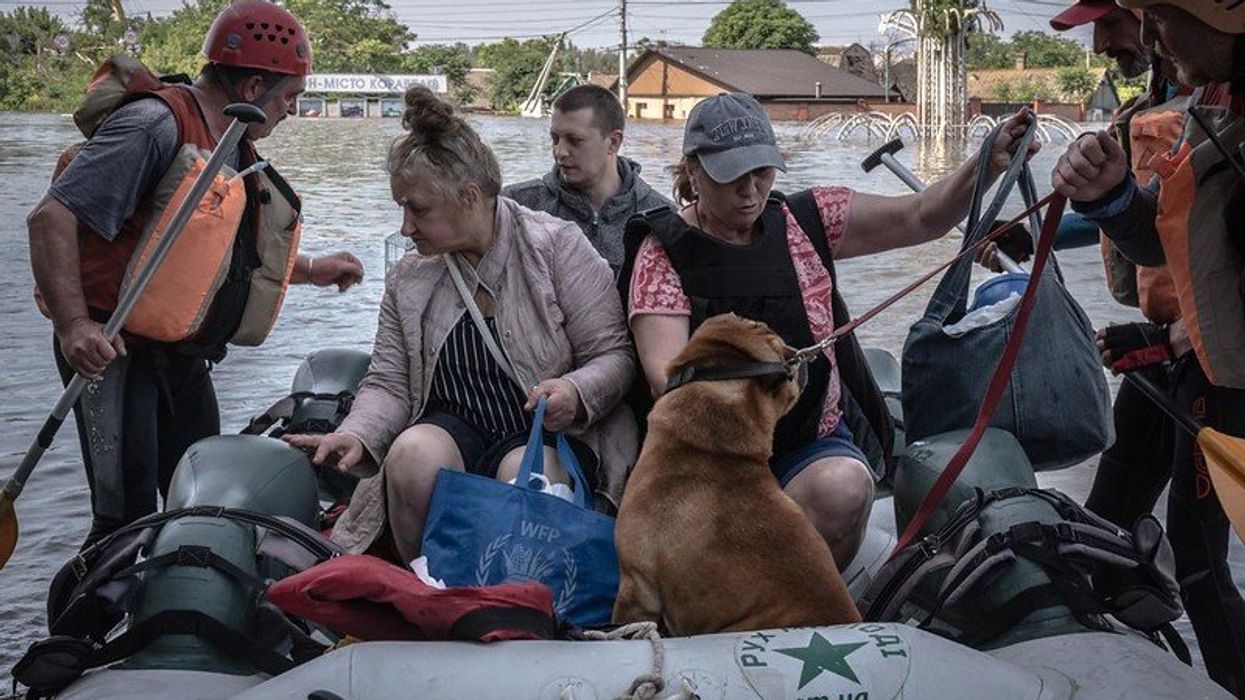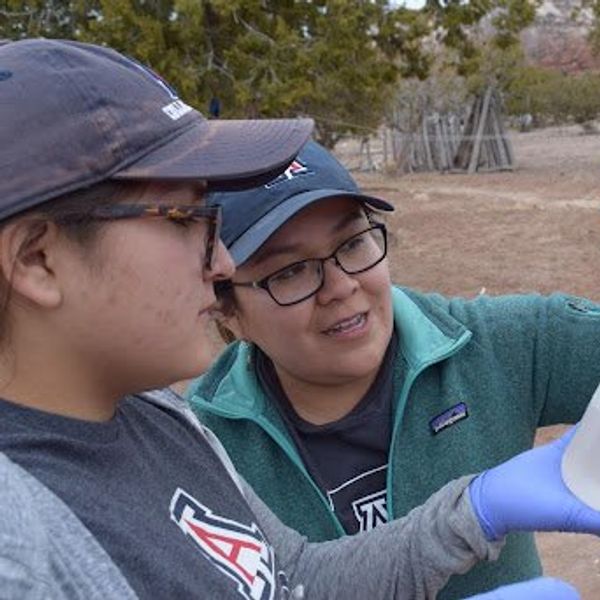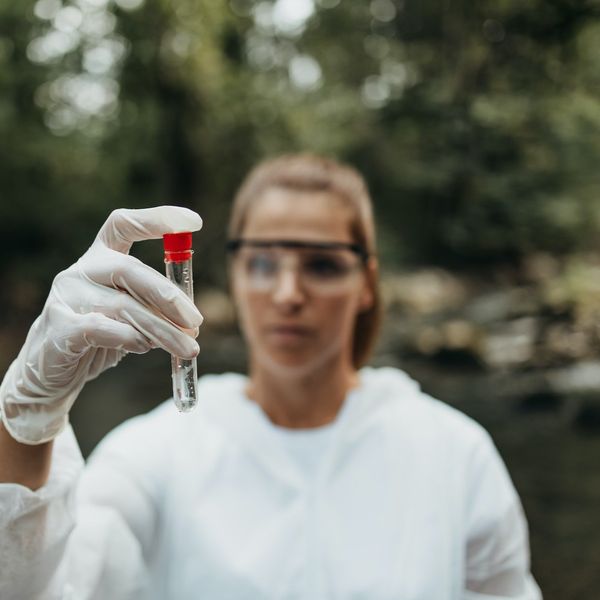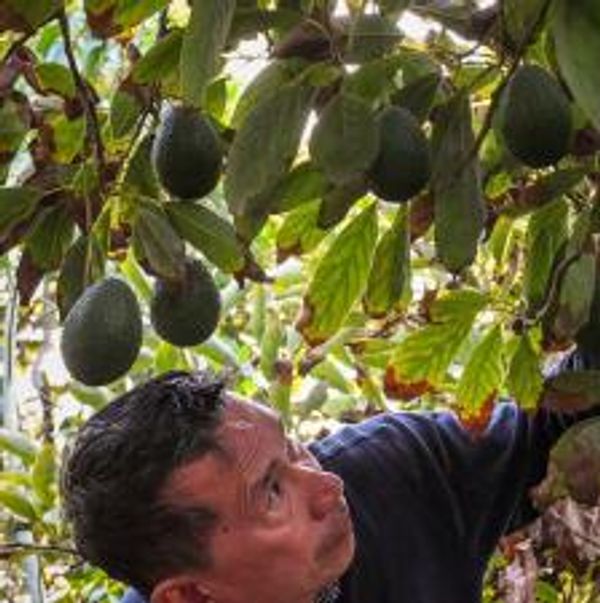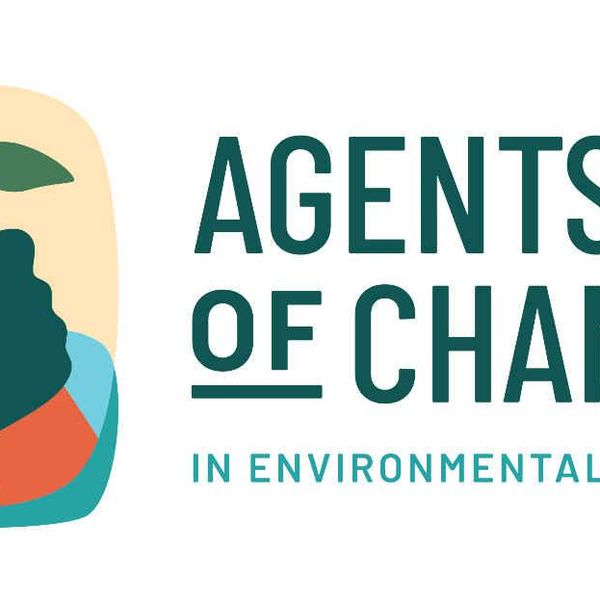PARKERSBURG, W. Va. – Tommy Joyce is no cinephile. The last movie he saw in a theater was the remake of "True Grit" nearly a decade ago. "I'd rather watch squirrels run in the woods" than sit through most of what appears on the big screen, he said.
But there's a film that opened Dec. 5 at the Regal Cinemas at Grand Central Mall that's attracting a lot of attention in his community. "Dark Waters" — a legal thriller starring Mark Ruffalo, with a script inspired by a 2016 New York Times article — tells the epic story of the DuPont corporation's failure to inform residents of the Mid-Ohio Valley of the considerable health risks of a perfluoroalkyl substance [PFAS] called perfluorooctanoic acid, or C8, for its chain of eight carbons.
The chemical was used in DuPont's production of Teflon and other household products at its Washington Works facility just outside Parkersburg, along the Ohio River. C8 is found in nonstick pans, waterproof clothing, stain-resistant carpets, microwave popcorn bags, fast-food wrappers and hundreds of other products. According to a 2007 study, C8 is in the blood of 99.7% of Americans. It's called a "forever chemical" because it never fully degrades.
DuPont had been aware since at least the 1960s that C8 was toxic in animals and since the 1970s that there were high concentrations of it in the blood of its factory workers. DuPont scientists were aware in the early 1990s of links to cancerous tumors from C8 exposure. But company executives failed to inform the Environmental Protection Agency [EPA] or the public.

An aerial view of Parkersburg, West Virginia, taken from Fort Boreman Park on Nov. 20, 2019. (Credit: Lexi Browning/100 Days in Appalachia)
Joyce graduated from Parkersburg High School in 1992, went off and earned three degrees and came home. He now serves as mayor of the city of Parkersburg — population: 30,000.
Joyce said he's heard more about his community's long struggle with corporate environmental malfeasance in the past few weeks than in his previous two and a half years in office. He attributes this to the release of "Dark Waters."
Even David-and-Goliath tales often have complicated backstories, and Joyce knows well that such is the case with Parkersburg and DuPont. "DuPont has been in the Ohio Valley for 70-plus years, and has been a tremendous employer," he said. "Without question, DuPont was the place to work in the Mid-Ohio Valley for a lot of years." Many of his classmates grew up in DuPont families.
Though Chemours, a spinoff company of DuPont, now operates the Washington Works plant, DuPont maintains a presence in the community. A DuPont spokesperson provided an overview of its financial and volunteer support initiatives and wrote that the company supports programs and organizations focused on revitalizing neighborhoods and enhancing quality of life; STEM-related initiatives in local schools; and "initiatives that help protect the environment through clean-up or restoration efforts and allow for DuPont Washington Works to show we are a leader in minimizing our environmental footprint within the community."
Parkersburg, said Doug Higgs, is the kind of town where everybody knows everybody. Higgs graduated from Parkersburg High a year after Joyce, and Joyce's mother, Barbara, taught him Sunday school.
"Everybody knows everybody's business," Higgs said, but nobody talked about C8. It was a matter of "not wanting to bite the hand that fed you."
Well-paying jobs, great benefits, Little League sponsorships, investments in the arts — but at a cost. The hand that fed did clench.
Higgs, now an emergency room physician living in Richmond, Virginia, recalls returning from road trips with his family asleep in the back seat, awakened as they approached home by the familiar waft of chemicals.
Two of the Higgs' most immediate neighbors died in their early 50s of renal cell cancer. Higgs' father has ulcerative colitis, and his brother received treatment for polycystic kidney disease in high school.
"We all have stories of friends and family, neighbors, dying too young or being diagnosed with various medical problems," Higgs said.
He knows, of course, the distinction between correlation and causation. But the high incidence of a range of diseases has staggered this community. It's unfair, Higgs said, that a community should have to perpetually ask what exactly it has been exposed to, and where and when the consequences will end.
The old ‘hey-look-over-here’
DuPont's own documentation specified that C8 was not to be flushed into surface waters, but the company did so for decades. The chemical seeped into the water supplies of the communities of Lubeck and Little Hocking, immediately west of Parkersburg, and the city of Belpre, Ohio, just across the river; and three other water systems.
In 2004, DuPont paid $70 million in a class-action lawsuit and agreed to install filtration plants in the affected water districts. In 2005, it reached a $16.5 million settlement with the EPA for violations of the Toxic Substances Control Act.
A collective decision was made to use the money won in the class-action suit to conduct an epidemiological study in which nearly 70,000 of the 80,000 plaintiffs stopped into one of six clinics set up throughout the community, provided their medical histories and offered their blood. They were each paid $400.
A science panel, comprised of public health scientists appointed by DuPont and lawyers representing the community, was convened to examine the immense database. In 2012, after seven years of study, the panel released a report documenting a probable link between C8 and six conditions: testicular cancer, kidney cancer, thyroid disease, ulcerative colitis, pregnancy-induced hypertension and high cholesterol.
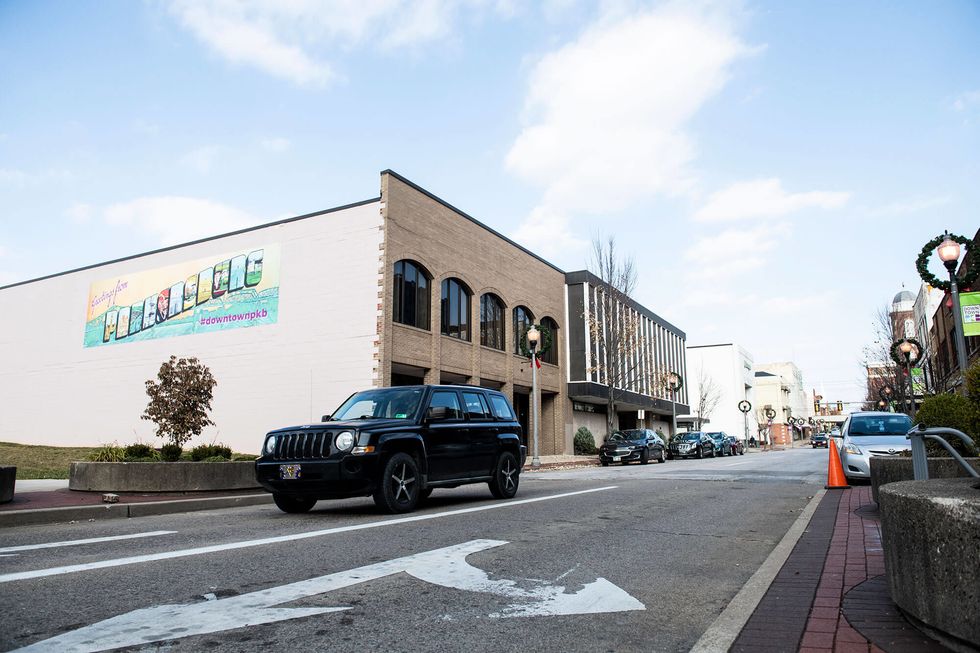
A vehicle slows down at the corner of Fourth and Market streets in Parkersburg, West Virginia, on Nov. 20, 2019. (Credit: Lexi Browning/100 Days in Appalachia)
In 2015, DuPont spun off its chemical division into a new company called Chemours, which now occupies the Washington Works facility on the Ohio. In 2017, DuPont and Chemours agreed to pay $671 million to settle some 3,500 pending lawsuits.
"You grew up with the fear of DuPont leaving town," said Ben Hawkins. Hawkins was student body president of the Parkersburg High class of 1993. He remembers DuPont's participation in his school's Partners in Education program and riding in parades on DuPont-sponsored floats.
Among Hawkins' classmates who have been diagnosed with pancreatic cancer was Mike Cox, a local dentist. Cox, Hawkins and Higgs were among a pack of guys who ran together in high school and stayed close after. Cox was a big Ozzy Osbourne fan, and after a grueling regimen of chemo, Hawkins helped arrange backstage passes to a concert, where Osbourne pulled Cox near and shared his own family's experience with cancer. Post-diagnosis, Cox had begun performing stand-up comedy routines that incorporated flute solos. He died Jan. 28, 2017, at the age of 41, a father of three.
Hawkins, who now lives in the Washington, D.C., area, views his Partners in Education experiences somewhat differently today: "It wasn't a partnership; it was a page from a public relations playbook. It was the old 'hey-look-over-here!' move to keep the Teflon dollars flowing into their bank account."
His classmate Beth Radmanesh has similar cynical recollections of DuPont's role in her childhood. Radmanesh grew up less than a mile from the Washington Works plant. Today, she has high cholesterol. Her dad suffers from discoid lupus, causing sores the size of 50-cent pieces on his forehead. Her brother has lupus and had colon cancer, and her sister-in-law has also been diagnosed with lupus.
But Radmanesh said her mom is a proponent of bringing another controversial industry to the valley: fracking for natural gas. "I said to her, 'We've already had our water contaminated once. Do you want your water [to be] flammable? Because that's what will happen.'" Her mom's response was, "'Oh, Beth.' That's it. 'Oh, Beth.'"
A ‘weird mix’
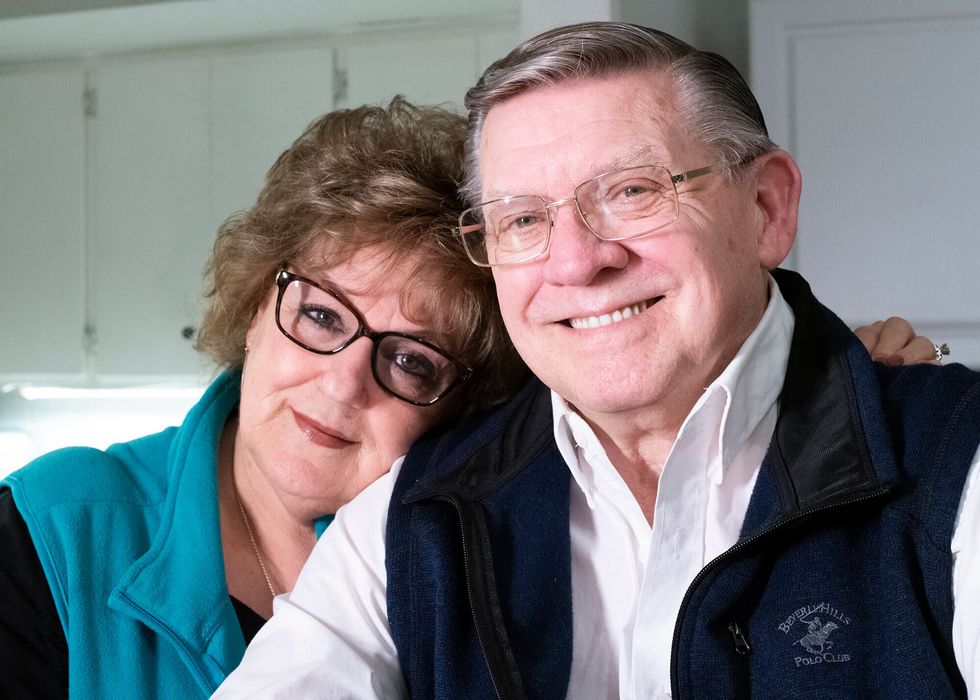
Joe Kiger and his wife Darlene Kiger are photographed at their residence in Washington, West Virginia, on Dec. 4, 2019. The Kigers have spent the last two decades working to uncover the impacts and effects of C8 exposure in the region. (Credit: Lexi Browning/100 Days in Appalachia)
Joe and Darlene Kiger live just a few miles from where Radmanesh grew up. Joe, a physical education teacher, is now quite well known in the community for having raised awareness of the dangers of C8 — called "the devil's piss" by some — in local water supplies. He and his wife, Darlene, joined the class-action suit that was settled in 2004.
Darlene said that when she and Joe are out around town, "there are a lot of whispers behind your back. They don't know what to say." The experience has taken a toll — "these people all looking at you as bringing this on them," Joe said — but they've never considered leaving. "Why would you leave the fight?" he said. "What would it look like if we packed up?"
There's a lot, Joe said, that DuPont hasn't yet been held accountable for. Earlier this year, Chemours was cited by the EPA for the unregulated release of new chemical compounds from its West Virginia and North Carolina facilities. "I'm not done yet," Joe said.
Harry Deitzler served as a lead attorney, among others, in representing the Kigers and tens of thousands of others in the class-action suit. Deitzler was the architect of the decision to use the $70 million to conduct the study.
"Parkersburg adopted me in 1975," Deitzler said of his arrival in town. He'd come for a summer internship in the prosecuting attorney's office. The position didn't pay enough to cover his room and board, so he took a job in a bar called Friar Tuck's.
"By the end of the summer, the community was my family," Deitzler said. "I asked the prosecutor if he'd hire me as an assistant the next year, and he said, 'Sure; you'll get $6,000 a year.' And I said, 'That'll be great.'"
"Most people thought I was a recovering alcoholic because I never drank a beer, because I couldn't afford to buy one." Three years later, at 27, he was appointed as prosecuting attorney. "Such a wonderful, accepting community."
But, some three decades later, there was a price to pay for taking on DuPont.
"There was a misperception that we were trying to put DuPont out of business, and, of course, that was created intentionally by the people in Wilmington," Deitzler said, referring to DuPont's Delaware headquarters. "When you have a community of that size, and you've got several thousand people employed there, and multiply that by the families and their relatives — it's very upsetting." Some folks were unsure of what to make of Deitzler.
Longtime resident Nancy Roettger characterizes the community's reaction to the revelation of what DuPont had done as a "weird mix."
"There were women that immediately went out and changed their frying pans," Roettger said. But a lot of those same people decided "that Harry Deitzler is a horrible person" for his role in exposing DuPont.
"It's like, they don't want that frying pan anymore," she said, "but they don't want anything negative, and they're very resentful of the people that stirred up the trouble."
Less than idyllic in retrospect

Candace Jones, a native of Vienna, West Virginia, is photographed downtown on Nov. 20, 2019. (Credit: Lexi Browning/100 Days in Appalachia)
Candace Jones, a neighbor and longtime friend of Roettger's, said she hates the perception that the community has been divided between the DuPonters and everyone else.
"We're a community and we all need each other," Jones said. "I think it's terrible, absolutely horrendous what happened because of decisions made for monetary gain. But I don't believe we can blame the everyday worker." Her father-in-law worked in the Teflon division. "He just went to work every day; he provided for [his family]."
Jones' friend Janet Ray's husband passed away 16 years ago from pancreatic cancer. He worked for BorgWarner, a manufacturing company on the river. There are about a dozen houses along Ray's street in Vienna, a Parkersburg suburb, "and I think just about every house during the time I've lived on the street has been affected by cancer."
Ray said she sometimes feels guilty, thinking that perhaps the livelihood her family has enjoyed as a result of her husband's employment might have caused health problems for others. "I certainly hope it didn't."
Tracy Danzey was raised in the quiet of Vienna, there with the Rays, the Joneses, the Higgs family. She now lives on the other side of the state, in West Virginia's Eastern Panhandle. Danzey was a competitive swimmer growing up. When not competing, "we were on the river … we were playing in the creeks. I was always in the water."
"It's hard to look back at that time now and see it as idyllic," Danzey said.
At age 20, her thyroid began malfunctioning. Five years later, the socket of her hip shattered while running with her husband. She was diagnosed with an atypical form of bone cancer in her right hip. Her hip and leg had to be amputated; she underwent 18 months of high-dose chemotherapy.
Six leading pathologists from across the country were unable to identify the specific type of cancer. "They said it's very pathologically unusual." Research has indicated to Danzey, who's a nurse, that pathologically unusual cancers are not uncommonly associated with industrial poisonings.
Danzey's stepfather is retired from DuPont and her stepbrother works on the Teflon line. "Yes, it is complicated," her mother, Carolyn Tracewell, said. When her kids were growing up, when someone was hired at DuPont, "there was a celebration" — the good pay, the benefits, "and they did treat their employees well."
But "my heart hurts," Tracewell said, to think that her daughter's illnesses might be a consequence of all that.
Danzey said her mom "mostly just feels pain for me," worries about her stepson and is anxious about the future. Her stepfather wonders if one day his pension check will no longer arrive as a result of all the financial fallout.
None of them argue with Tracy about the source of her illnesses. "They know what happened." They allow her "to sit in this truth regardless of how it affects them." That means a lot.
Danzey is among those who believe that in regard to perceptions of DuPont in the Parkersburg community, there's a generational divide: Those in their 40s and younger tend to hold a less charitable view than baby boomers and their parents.
There likewise appears to be a generational divide in willingness to drink the water, despite the filtration installed as a result of the settlement.
On the September Saturday afternoon of the annual Parkersburg Paddlefest, kayaker Travis Hewitt, 31, stood ashore of the point where the Ohio meets the Little Kanawha and said that few people he knows truly believe the water's safe. Sure, he paddles in it, but "I try not to get it on me" and never swims in it. He has a filter installed in his kitchen.
Home
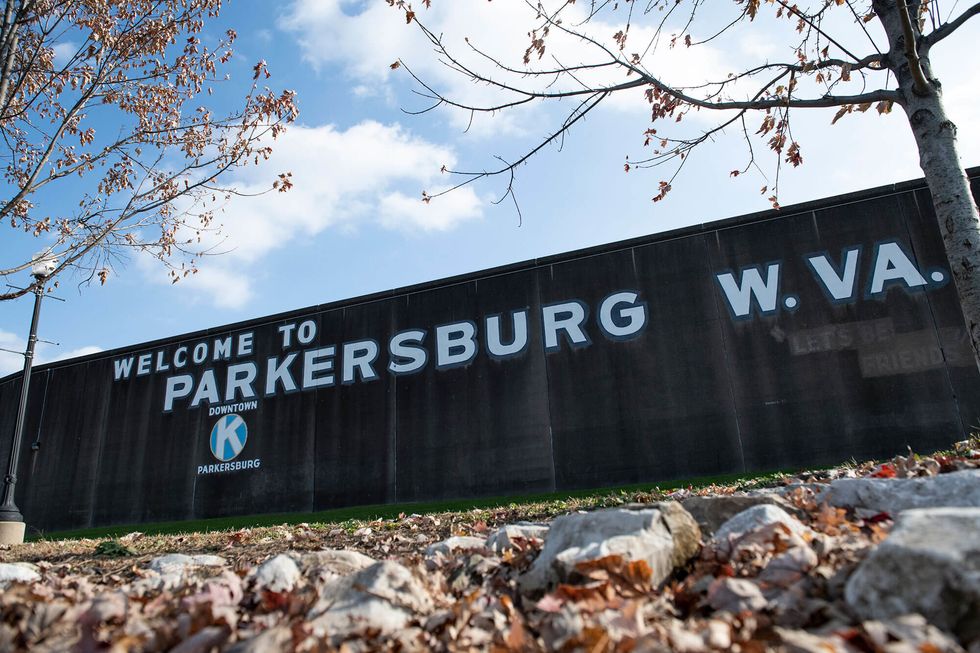
Weathered signage on the Point Park floodwall greets passersby in downtown Parkersburg, West Virginia, on Nov. 20, 2019. (Credit: Lexi Browning/100 Days in Appalachia)
Tommy Joyce, the mayor of Parkersburg, is bullish on West Virginia: "We've got enough coal to light the world, gas to heat the world and brains to run the world."
Fellow Parkersburg High grad Brian Flinn, an engineer, worked for DuPont for eight and a half years; he worked with the raw materials of Teflon. He's seen both sides. He's heard, "If DuPont leaves, we're done. This area will be like most other towns in West Virginia; it'll collapse." He's also aware of the inherent dangers in living within the shadow of the chemical industry. So the sentiment goes, he said, "You take the good with the bad, right?"
But Danzey is unwilling. "I love West Virginia," she said. "I really do. I love this state. I don't want to be anywhere else." But she wants better for West Virginians. Industries come into their communities, do well for a while, "screw up the environment and then leave."
"It's time for something new in West Virginia," she said. "It's time for us to expect more."
Pondering that future keeps Ben Hawkins up at night. "What's next? What's next for the community, and where does this end? Or does it? What sort of positivity can come to that community? They need it and they deserve it."
Hawkins asks this: Think about how loyal the people of the Parkersburg community have been to DuPont. What if they had the opportunity to extend that same loyalty to a company that's equally invested in the economic, physical and emotional health of the community?
"That's home and always will be home," Hawkins said of Parkersburg. "We came from that community and that community did a lot to shape us. We all want the best for that community … whatever form that can take."

Taylor Sisk, a Nashville-based healthcare reporter, authored this story for 100 Days in Appalachia. He can be reached at wtsisk1@gmail.com.
Good River: Stories of the Ohio is a series about the environment, economy and culture of the Ohio River watershed, produced by seven nonprofit newsrooms. To see more, please visit ohiowatershed.org.
Banner photo: Tracy Danzey grew up in Parkersburg, West Virginia, but now lives on the opposite side of the state in its Eastern Panhandle. Danzey was diagnosed with a rare form of bone cancer that led to the amputation of her leg. (Credit: Seth Freeman Photography)
















